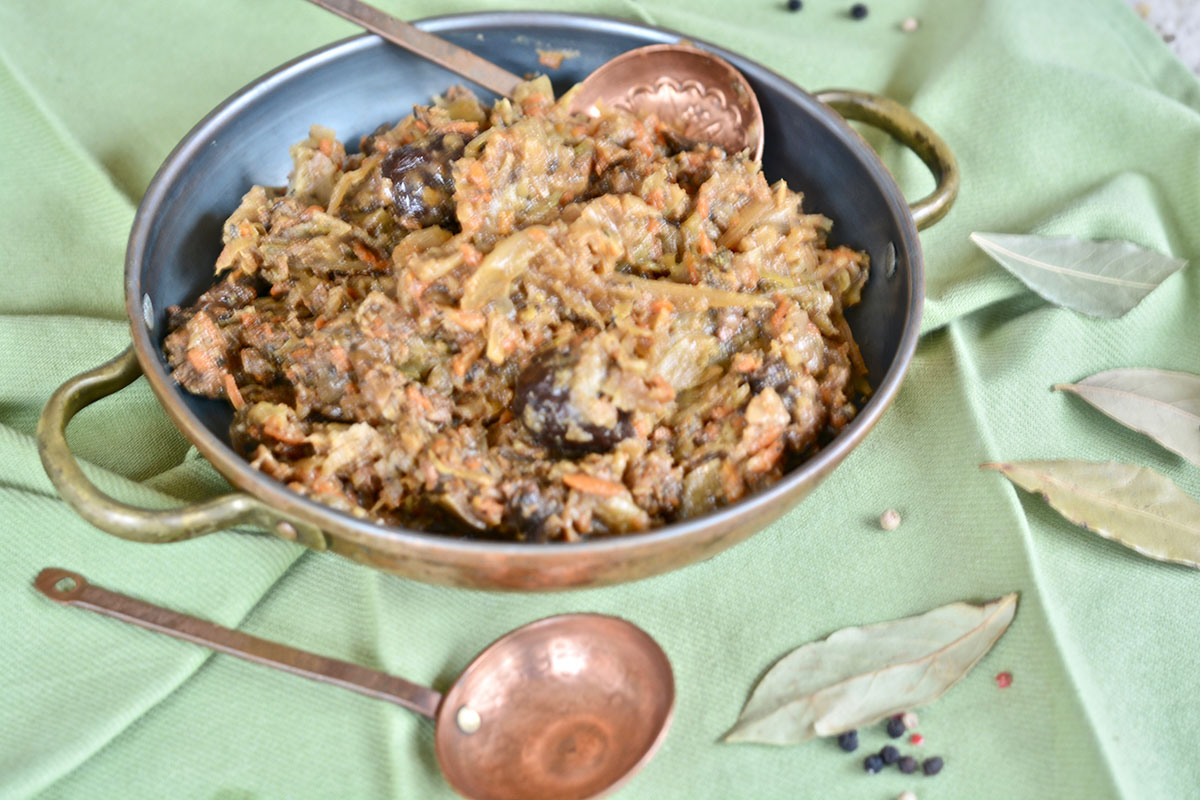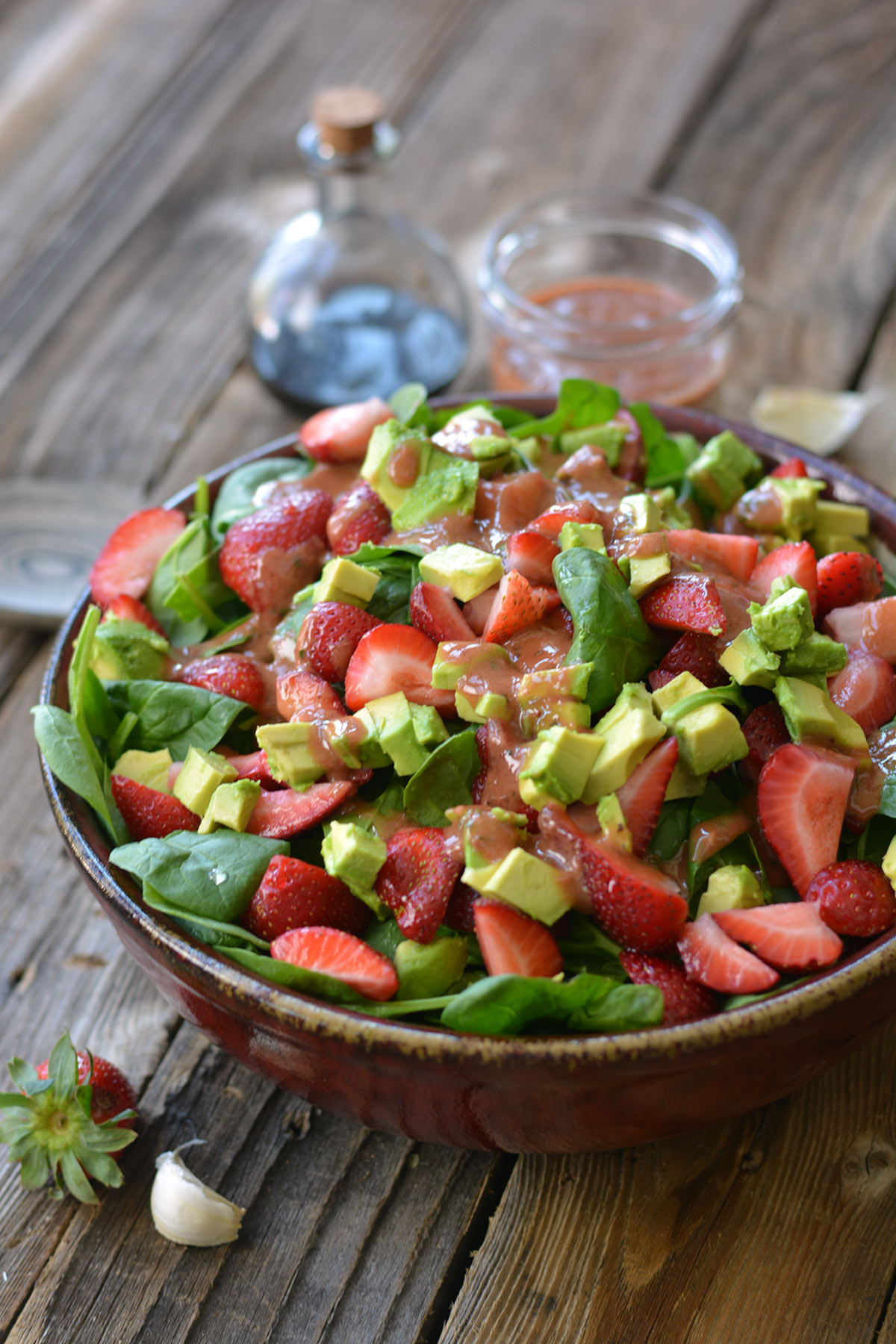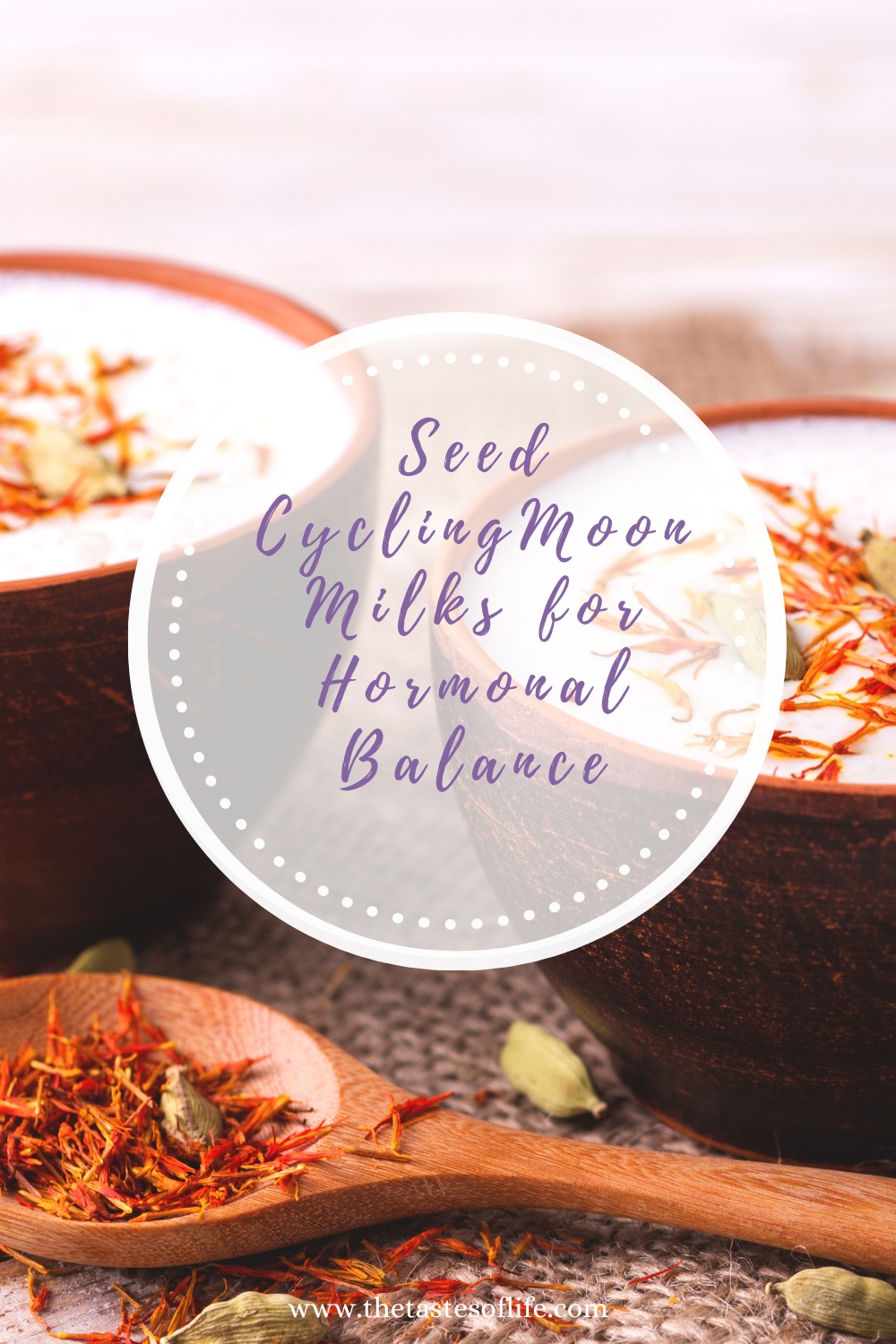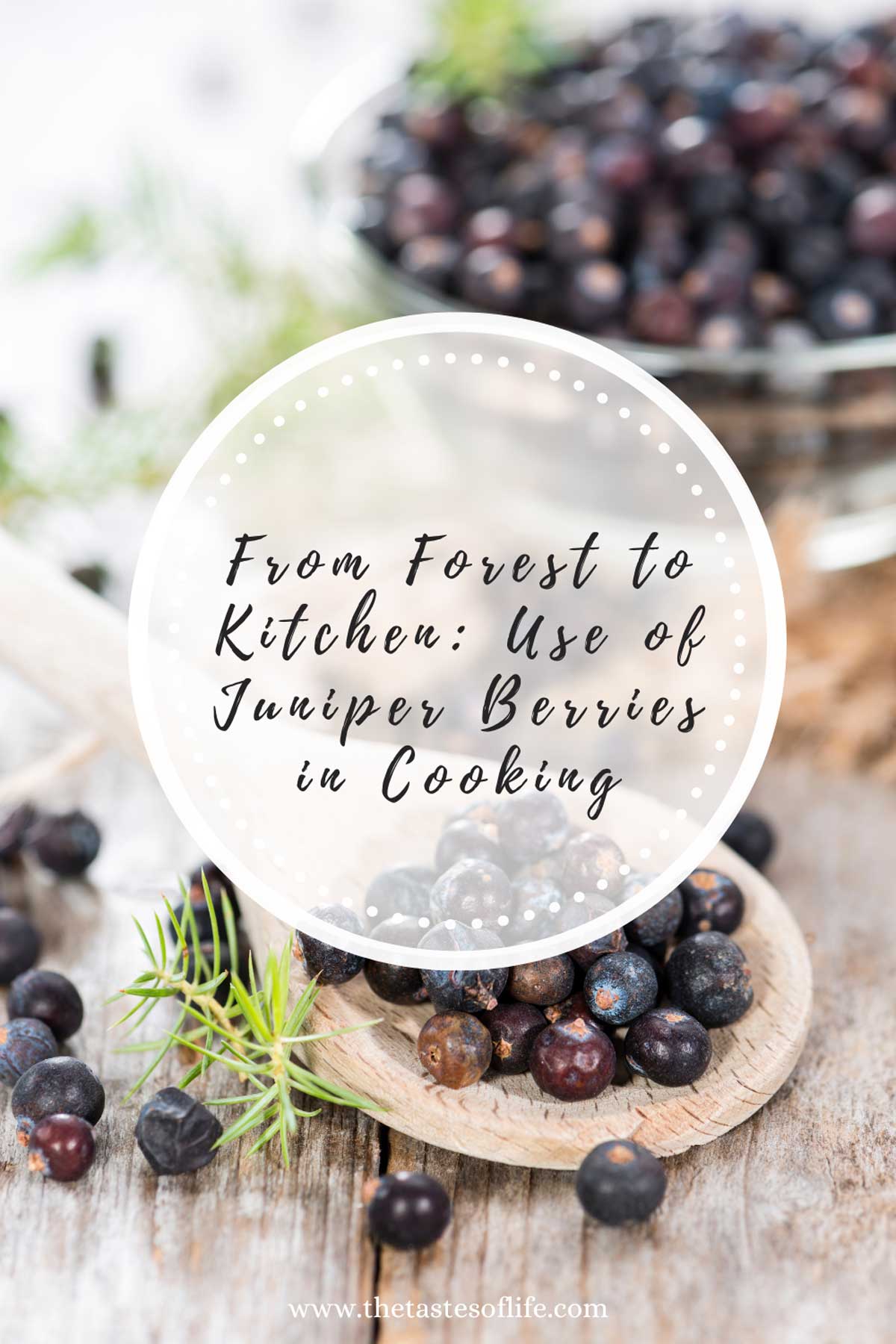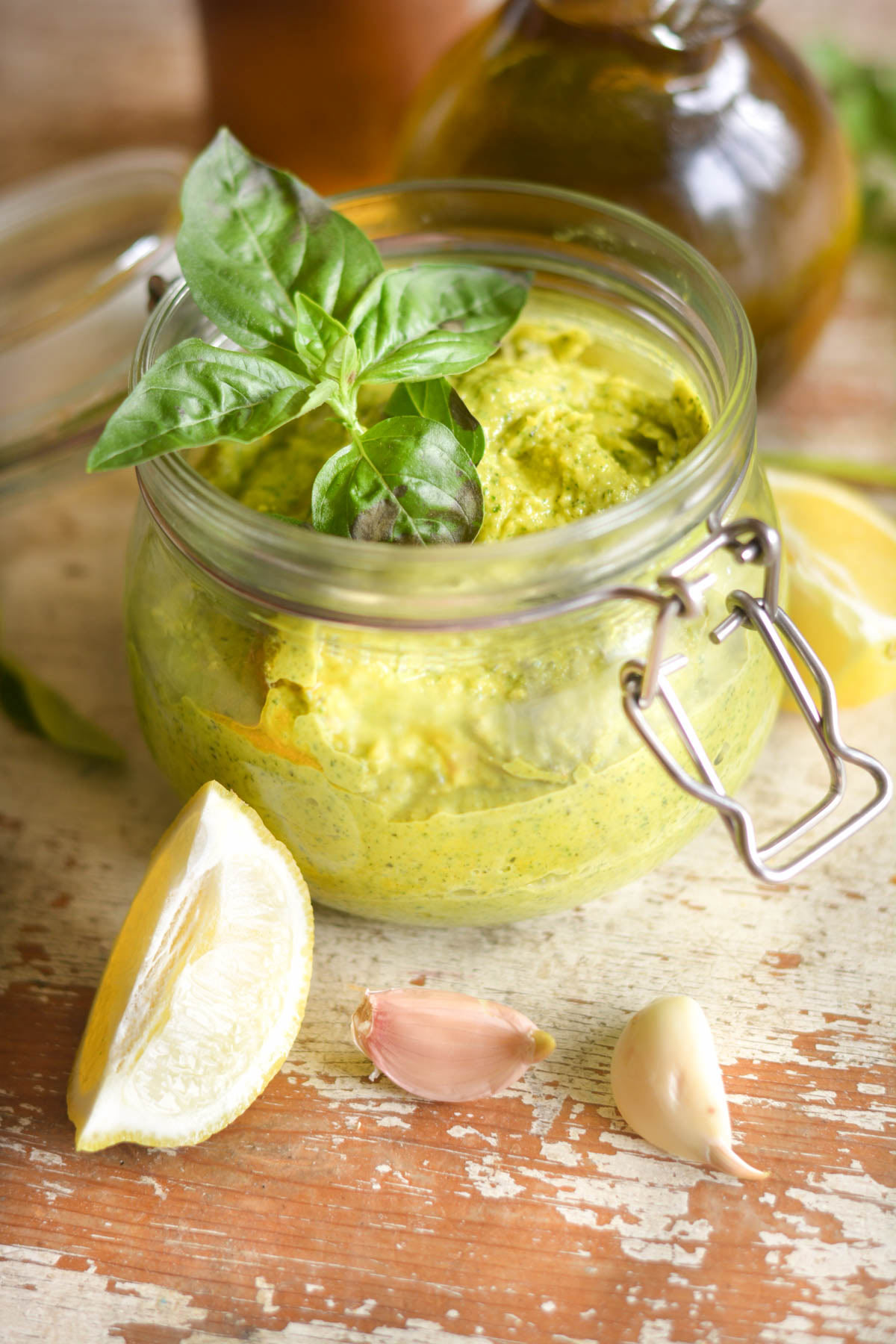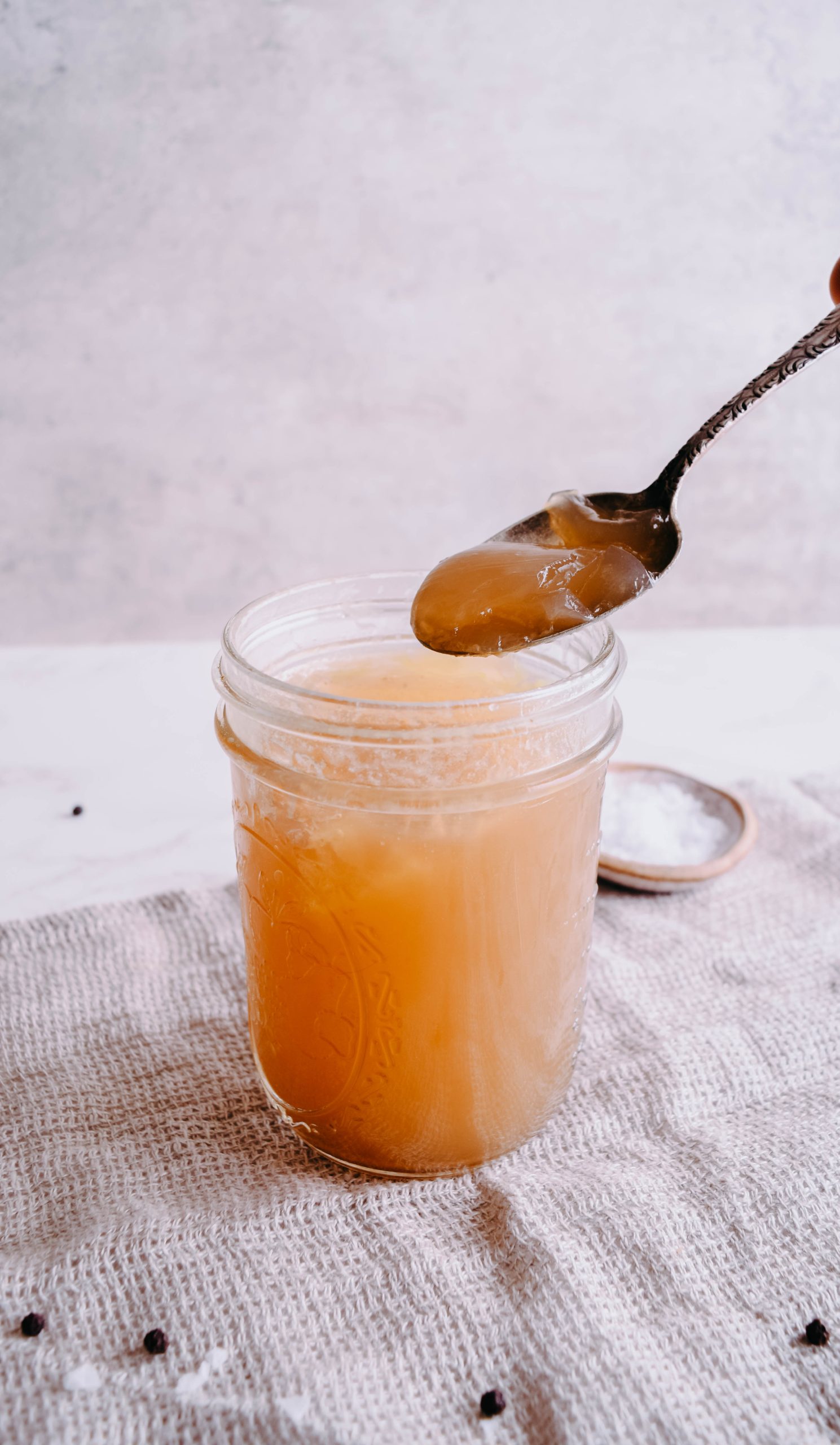How to Make Nut and Seed Bread (Keto, Paleo, GF, Low Carb)
Sharing is caring.
Healthy Nut and Seed Bread – gluten-free, Paleo, low carb, no-knead, good-for-you bread – loaded with seeds and nuts. And the best keto bread you ever had.
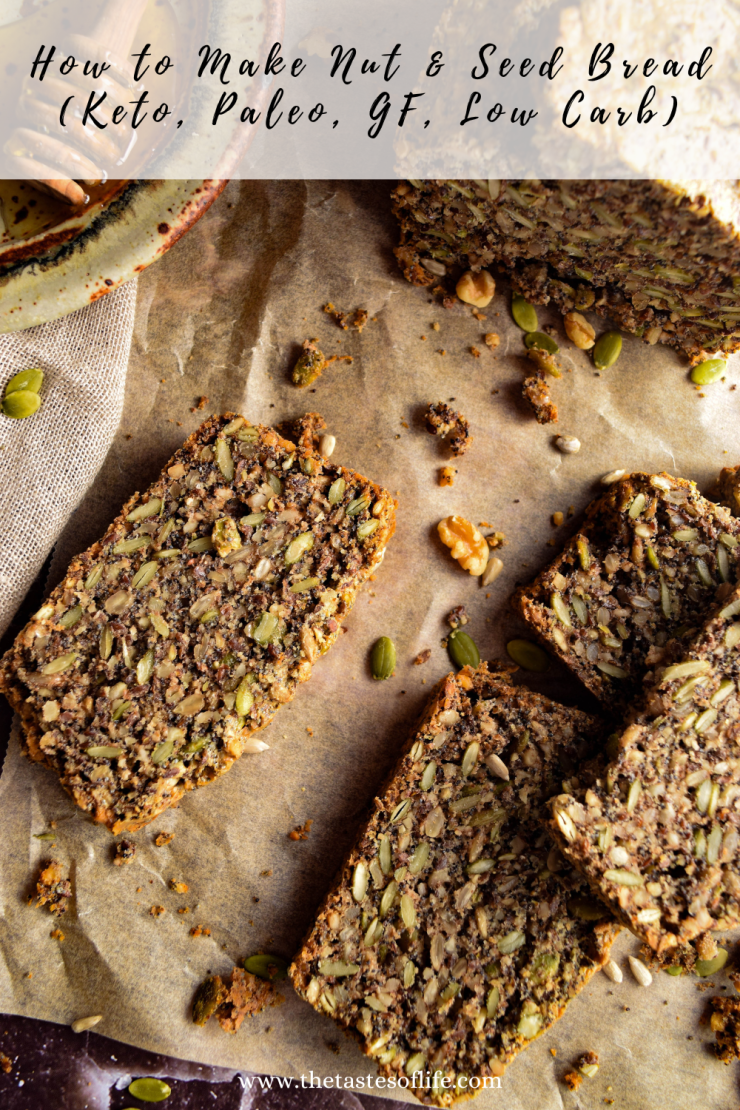
No Flour Nut and Seed Bread
Healthy Nut and Seed Bread – gluten-free, Paleo, low carb, no-knead, good-for-you bread – loaded with seeds and nuts. And the best keto bread you ever had.
Creating different gluten-free bread can be rewarding, as can creating homemade bread that aligns with a health-conscious lifestyle. I’m excited to share this easy, dense bread recipe with nutritious seeds and nuts with anyone looking to indulge in a guilt-free slice. Whether you are aiming for a low-carb diet, managing gluten sensitivities, or just searching for nutrient-dense whole foods, this bread is a perfect match.
Free from gluten and traditional grains, this multi-seed & nuts creation provides lovely flavors and textures while being surprisingly simple. It’s an ideal choice for those on a gluten-free diet, folks with celiac disease, and anyone dabbling with paleo or keto lifestyles. Packed with healthy fats and fiber, it not only meets the dietary needs but also contributes positively to daily nutrition, making each slice a wholesome addition to any meal. Let’s embark on this baking adventure of this quick bread together, and I’ll guide you step by step to crafting your very own no-flour bread masterpiece.
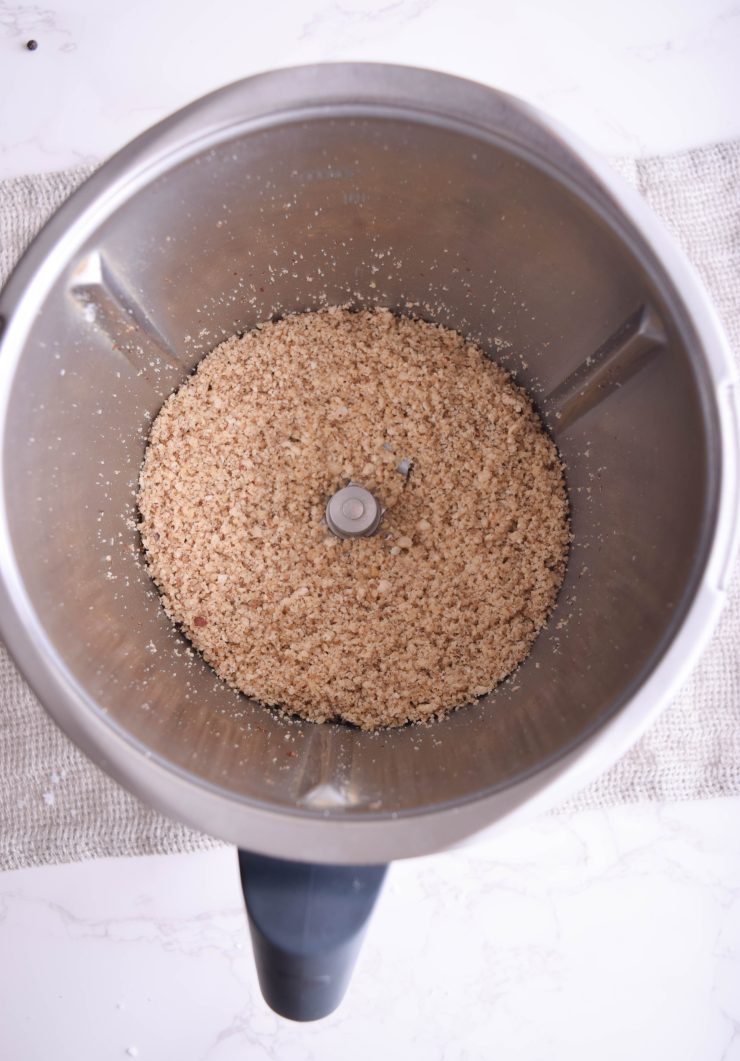
Why Go Flourless?
Exploring the world of grain-free baking has led me to discover that traditional flours aren’t the only route to delicious bread. Many of us, myself included, embrace flourless recipes due to gluten sensitivity, celiac disease, or follow a Paleo diet or Keto diet. The absence of gluten in a diet can resolve many uncomfortable symptoms and promote digestive wellness. But beyond gluten avoidance, there’s the buzz around low-carb lifestyles. Cutting down on carbohydrates is a common aim for those looking to improve their metabolic health or seeking weight management.
Enter seeds and nuts: the heroes of the no-flour bread universe. These tiny powerhouses bring more than just crunchiness to the loaf—they infuse every slice with an impressive profile of nutrients. Seeds such as flax, pumpkin, poppyseed, and sunflower pack your bread with fiber, protein, and healthy fats, all essential for a well-rounded diet. Cashews and walnuts bring a variety of vitamins and minerals and a satisfying buttery taste. When blended together in bread, this medley of seeds and nuts transforms what could be an ordinary meal into a delightful symphony of flavors and textures, with benefits that far exceed those of their wheat-based counterparts.
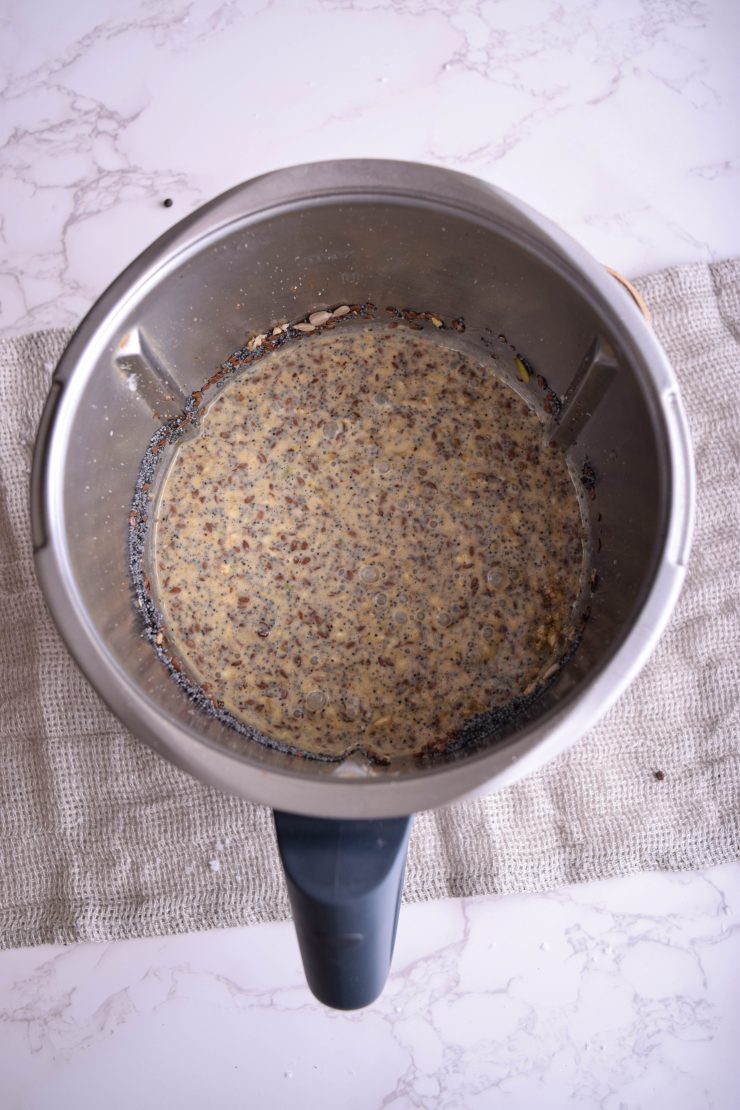
What Is Paleo-Friendly Bread?
Paleo-friendly bread is a type of bread that adheres to the principles of the Paleo diet, inspired by our ancestors’ dietary patterns from the Paleolithic era. The Paleo diet emphasizes whole, unprocessed foods. It encourages the consumption of foods that would have been available to our ancestors, such as lean meats, fish, fruits, vegetables, nuts, and seeds. The diet excludes grains, legumes, dairy products, refined sugars, and processed foods.
Paleo-friendly bread is crafted to meet the guidelines of the Paleo diet by using alternative ingredients that align with the allowed food categories. Here are key features of Paleo-friendly bread:
- No Grains: Traditional wheat and other grains are excluded from Paleo-friendly bread. Instead, alternative flours like almond flour, coconut flour, and arrowroot flour may be used.
- Nut and Seed Ingredients: Many Paleo-friendly bread recipes incorporate nuts and seeds, such as almonds, walnuts, chia seeds, and flaxseeds. These ingredients not only add texture and flavor but also contribute healthy fats and nutrients.
- Low in Carbohydrates: Paleo-friendly bread is often lower in carbohydrates than conventional bread, as it avoids using grains and relies on alternative flour and ingredients.
- Natural Sweeteners: If sweeteners are used, they are typically natural options like honey or maple syrup, avoiding refined sugars.
- Egg-Based: Eggs are commonly used in Paleo-friendly bread recipes to provide structure and moisture. They also contribute to the protein content of the bread.
- Gluten-Free: As gluten-containing grains are excluded from the Paleo diet, Paleo-friendly bread is naturally gluten-free. This makes it suitable for individuals with gluten sensitivities or celiac disease.

What Goes Into Nut And Seed Bread
This low-carb bread recipes contains:
- Poppyseeds: Poppy seeds are rich in nutrients, including dietary fiber, healthy fats, protein, and minerals such as calcium, iron, magnesium, and phosphorus. While they are nutrient-dense, they are typically used in small quantities, so their contribution to overall nutrition may be modest.
- Flax seeds: Rich in lignans and Omega-3 fats, flaxseeds may reduce inflammation and promote hormonal balance. I like to use the golden flax seed.
- Pumpkin Seeds: A great source of magnesium, zinc, and fatty acids, these seeds help with immune function and heart health.
- Sunflower Seeds: Containing vitamin E and selenium, sunflower seeds are potent in fighting oxidative stress and inflammation.
- Cashews: Cashews are brimming with healthy fats, protein, and fiber, contributing to better heart health and weight management.
- Walnuts: Known for their high alpha-linolenic acid content, a plant-based omega-3, walnuts support brain health and reduce heart disease risk.
- Cashews or Almonds
- Baking powder: Gives our bread a nice rise – make sure it’s gluten-free.
- Sea salt: Balances flavors and enhances the overall taste of the bread.
- Hazelnuts: For a great flavor.
- Eggs: Work as a binding agent in the recipe. To accommodate vegan preferences, consider using chia or flax eggs.
- Apple cider vinegar: Activates the baking powder to help the bread rise. Lemon juice can serve as a substitute.
- Olive oil, avocado oil, or coconut oil
- Sesame seeds: optional, or you can replace either seed. I used them in my original recipe but decided to skip them because I like other seeds more.
What Tools Will I Need To Make This Paleo Bread Recipe
- Loaf Pan: A standard-sized loaf pan to shape and bake your bread.
- High-Speed Blender or Food Processor: To grind some of the nuts or seeds if they have a finer texture.
- Measuring Cups and Spoons
- Spatula
- Parchment Paper: Line your loaf pan with a non-stick surface that eases the bread removal after baking.
- Oven Thermometer: To verify your oven’s temperature, guarantee your bread bakes evenly and accurately.
- Wire Cooling Rack: Allows your bread to cool uniformly to avoid a soggy bottom.

Pre-Baking Prep for this Keto Nut and Seed Bread
In this amazing recipe setting the stage is vital before diving into the art of making this wholesome bread. I start this process by taking inventory of the ingredients I have on hand. This step keeps the baking flow smooth and ensures I don’t discover any missing items midway through. Next, I preheat my oven to 350°F (175°C), an important step to reach the right temperature for baking this dense bread evenly.
I then line a loaf pan with parchment paper, leaving some hanging over the edges for easy bread removal later. I recommend using a standard 9-inch by 5-inch pan, which is the perfect size for this loaf. A gentle coat of oil brush on the parchment paper prevents any sticking issues.
How To Make The Nut and Seed Bread
- Put walnuts, cashews, and hazelnuts in the blender. Pulse it until the nuts have a grainy texture.
- Add the rest of the ingredients and blend for 15 seconds. The dough is pretty watery.
- For best results, line parchment paper in the pan and oil it.
- Pour the dough into the pan.
- Sprinkle with seeds and nuts.
- Bake it in the oven for 60 minutes at 350F.
Finishing Touches & Cooling
Please carefully remove it from the oven once the bread is golden and aromatic, signaling its readiness. Set it aside on a heat-resistant surface, allowing it to rest within its baking container. This pause is crucial, as the bread continues to set, ensuring its integrity when sliced. Let it cool in the pan for at least 20 minutes before attempting the next step – removal.
With the bread slightly cooled, gently loosen the edges with a spatula or a palette knife. Now, invert the container carefully onto a wire rack or cutting board. If it sticks, give the container a light tap to encourage the bread to dislodge.
Your bread should now rest on the cooling rack, crust side down. It’s essential to resist temptation and wait for it to reach room temperature before slicing. Cutting too soon can cause the bread to crumble, as the heat keeps it soft and delicate.
Cooling can take about an hour, but patience pays off with perfect slices that maintain their shape and texture. This pause also allows the flavors within your seed and nut symphony to meld beautifully.
Once fully cooled, you’re ready to serve this nutrient-dense delight. Whether you enjoy it fresh or store it for later, each slice promises a guilt-free indulgence, staying in harmony with your dietary preferences.

Customization Tips for this Low Carb Bread
Personalizing your no-flour multi-seed and nut bread is straightforward and adds a delightful twist to the recipe. You can enhance the flavor and texture with various additions. For a Mediterranean flair, mix in chopped olives and sun-dried tomatoes. If you prefer a sweeter taste, consider adding a handful of dried cranberries or blueberries. For an earthy depth, chopped walnuts or roasted hazelnuts offer a wonderful crunch.
- Seeds: Pumpkin, sunflower, or chia seeds contribute additional texture and nutrients.
- Herbs: Stir in fresh rosemary, thyme, or oregano for an aromatic touch.
- Spices: Add cinnamon, nutmeg, or cardamom to the dough for a warm spice.
- Cheeses: Feta, cheddar, or parmesan lend a savory note and rich moisture to the bread.
- Nuts: Almonds, pecans, or macadamia nuts give a delightful crunch and richness.
- Dried Fruits: If you want a sweet version of this seed bread, you can add some dried fruit.
To create a textured crust, consider topping the loaf with a seed mix before baking. A brush of egg wash will help the seeds adhere and provide a glossy finish.
Serving and Storage
Suggestions: Slice this no-flour seed and nut bread once it’s completely cooled to maintain its structure. Enjoy it toasted with a spread of almond butter for added protein or topped with slices of avocado for a healthy fat boost. Its dense texture pairs beautifully with soup or salad, making it a versatile addition to your meals.
Storing for Freshness: Keep the bread slices in an airtight container at room temperature, where they stay fresh for up to three days. For longer storage, freeze slices with parchment paper between them to prevent sticking. Simply thaw or toast straight from the freezer for a quick, nutritious snack or meal component.
Remember to keep the bread dry to avoid mold growth. If you notice any condensation in the storage container, leave it slightly open to allow air circulation or store the bread in a cool, dry place. By taking these steps, you’ll ensure your homemade bread remains as delightful and nourishing as the day you baked it.
Avocado Toast with a Twist:
Slice and toast the Paleo Nut and Seed Bread then spread mashed avocado on top. Sprinkle with a pinch of sea salt and red pepper flakes for a flavorful and nutrient-packed breakfast or snack.
Peanut Butter Indulgence:
Spread your favorite nut butter generously over a thick slice of the bread. Top with sliced bananas or berries for a delicious and satisfying treat.
Cheese and Herb Delight:
Pair slices of Paleo Nut and Seed Bread with a selection of your favorite cheeses. Add fresh herbs like basil or rosemary for a savory and delightful appetizer or light lunch.
Egg Sandwich Bliss:
Toast slices of the bread and use them as a base for a hearty egg sandwich. Add scrambled or fried eggs, avocado slices, and a drizzle of hot sauce for a filling and protein-packed meal.
Smoked Salmon and Cream Cheese Delicacy:
Spread cream cheese on toasted slices and top with smoked salmon. Garnish with capers, red onion slices, and a squeeze of lemon for an elegant and flavorful dish.
Tomato and Basil Bruschetta:
Toast slices of the bread and top with diced tomatoes, fresh basil, and a drizzle of balsamic glaze. This bruschetta variation is a refreshing and summery option.
Simple Butter and Honey Pleasure:
Sometimes, simplicity is key. Spread grass-fed butter on a warm slice and drizzle with a touch of honey for a comforting and classic treat.
Crouton Crunch for Salads:
Cube the bread and toast it to create Paleo croutons. Sprinkle these crunchy delights over your favorite salads for an extra layer of texture.
This bread is one of my favorite low-carb breads recipes. It is perfect for the ketogenic diet, Paleo, gluten-free, and dairy-free. Enjoy!
Did you Make this Recipe?
Please let me know how it turned out for you! Leave a comment below and share a picture on Instagram with the hashtag #thetastesoflifeholisticblog
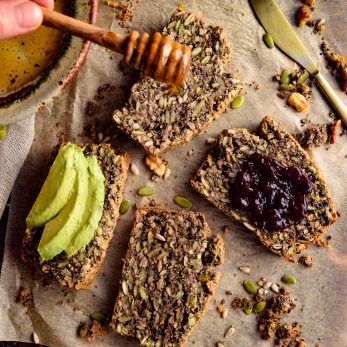
Fast No-Knead Multi-Seed Bread
Ingredients
- 1 cup walnuts
- 1 cup cashews
- 1/2 cup hazelnuts
- 1 1/2 cup pumpkin seeds
- 1 cup sunflower seeds
- 1/4 cup poppy seeds
- 6 eggs
- 1 tbsp salt
- 1 tbsp apple cider vinegar
- 1 tsp baking flour best grain free
Instructions
- Preheat oven to 350ºF (175ºC). Oil the loaf pan generously. Set aside.
- Put the walnuts, hazelnuts, and cashews in the food processor and pulse it until fine then transfer it to a medium bowl.
- Add eggs, apple cider, salt, baking powder and mix it.
- Add the rest of the ingredients in the butter and pulse it for 5 seconds.
- Transfer it to a baking pan, sprinkle with seeds, and bake it for 45-50 minutes.
- Let it cool down all the way after baking.
How To Store
- Best consumed within 7 days. Place in an air-tight container at room temperature.

